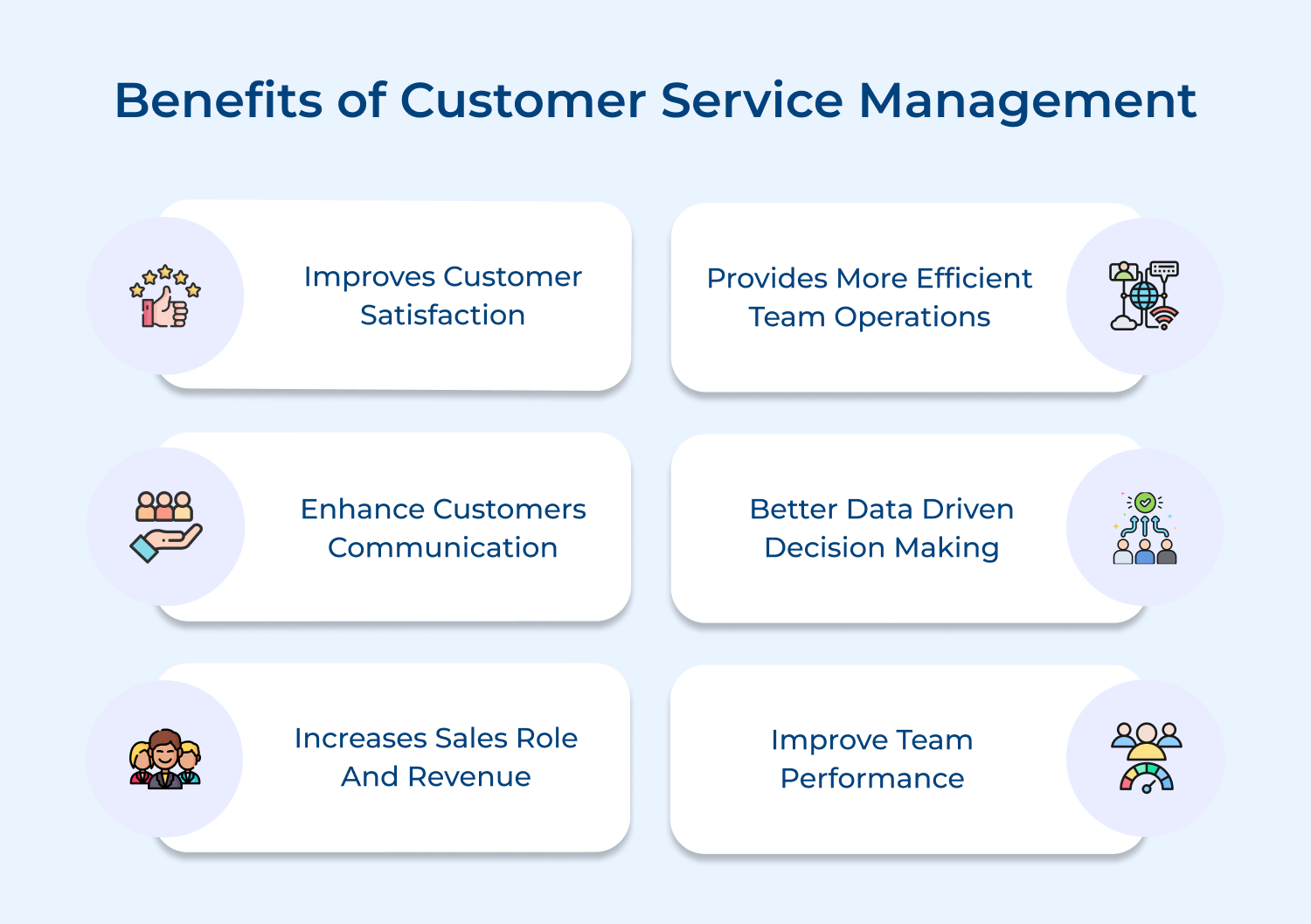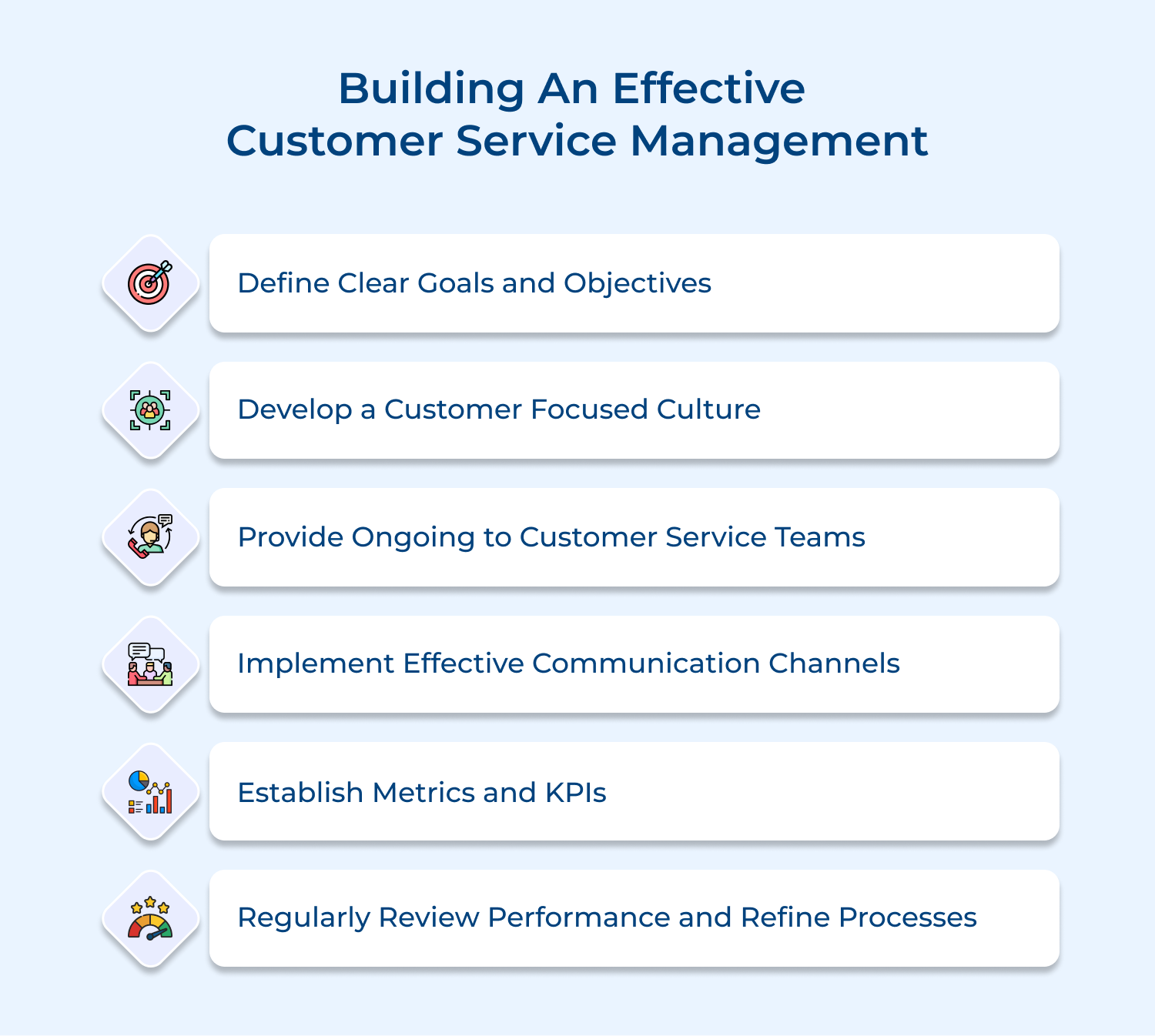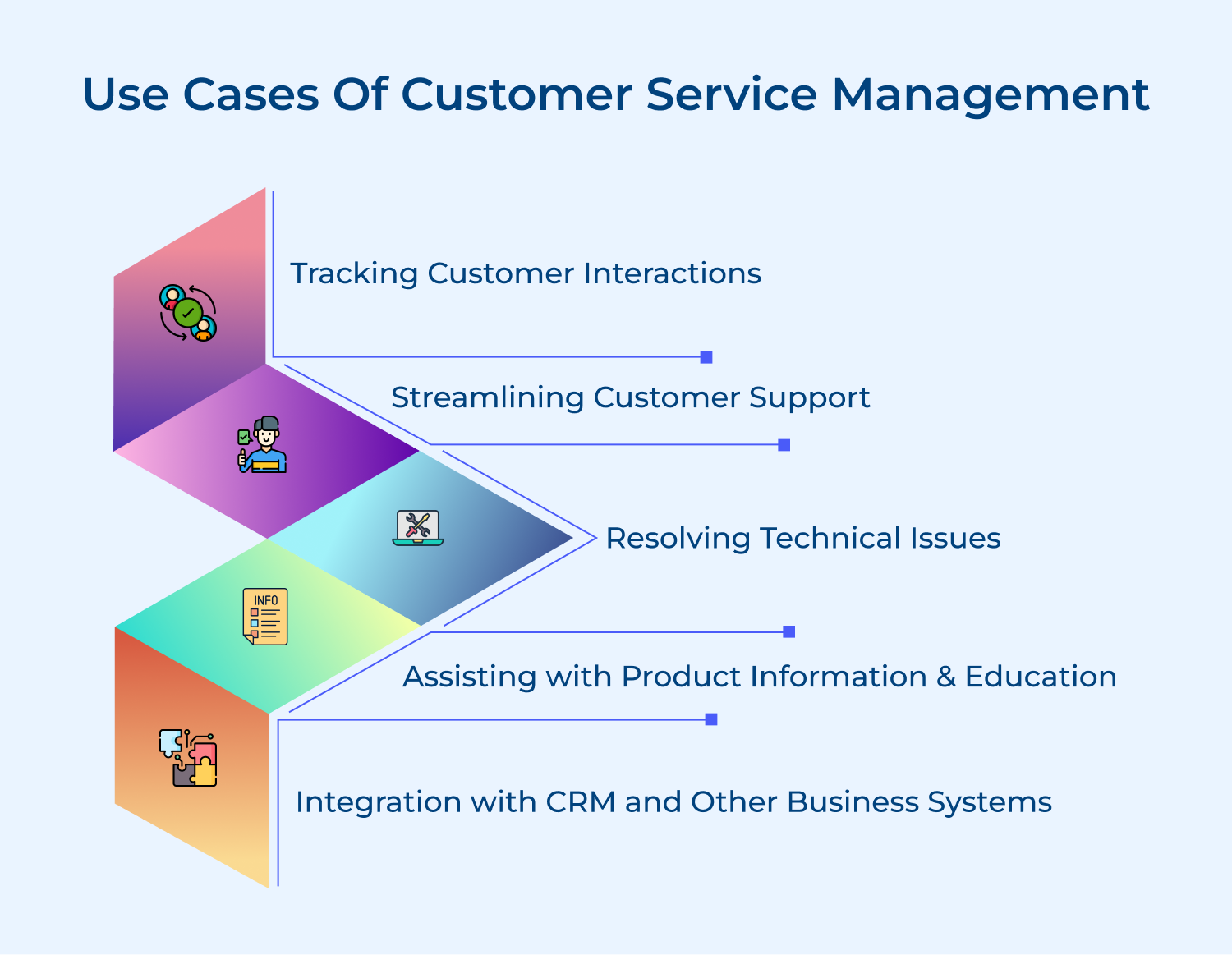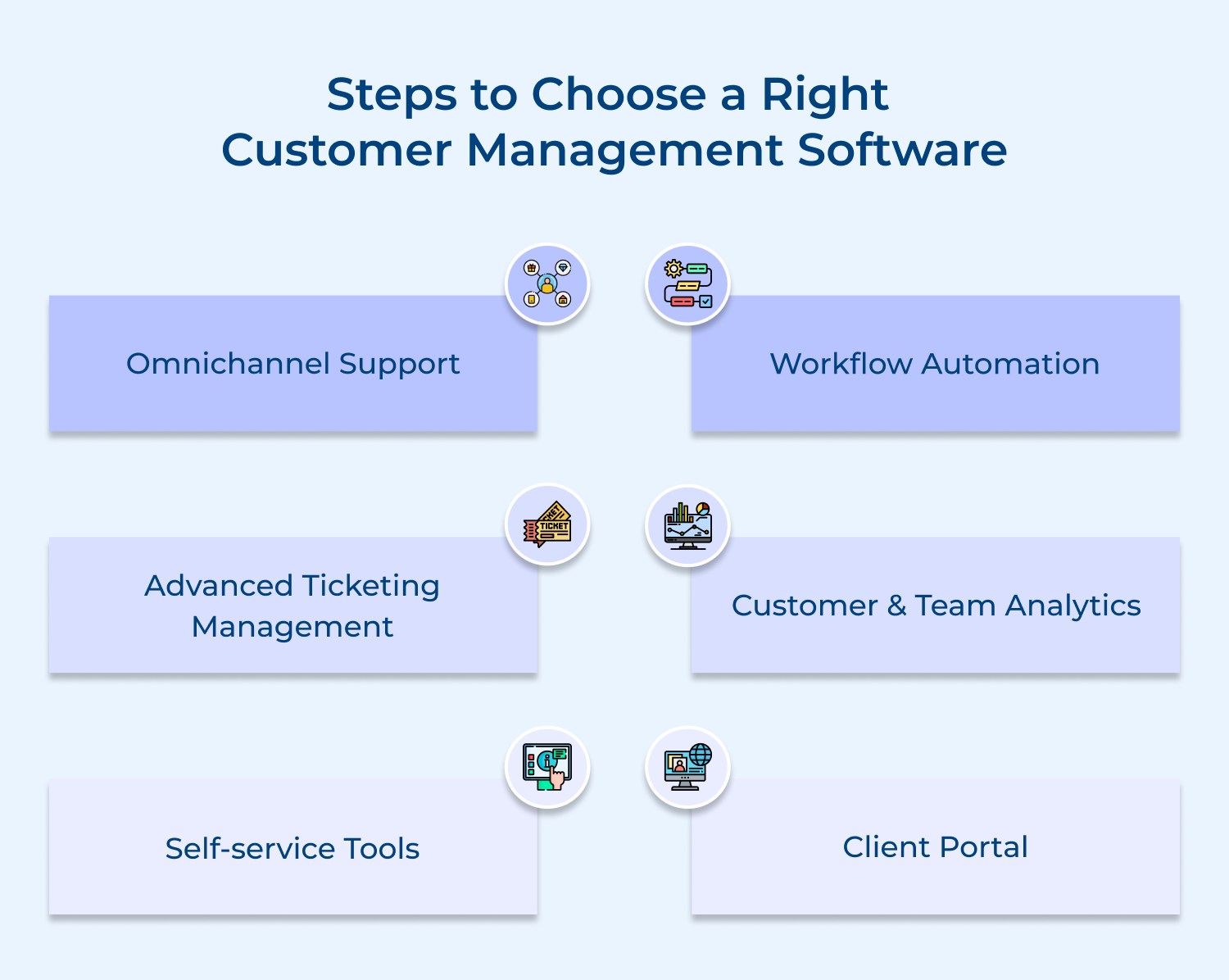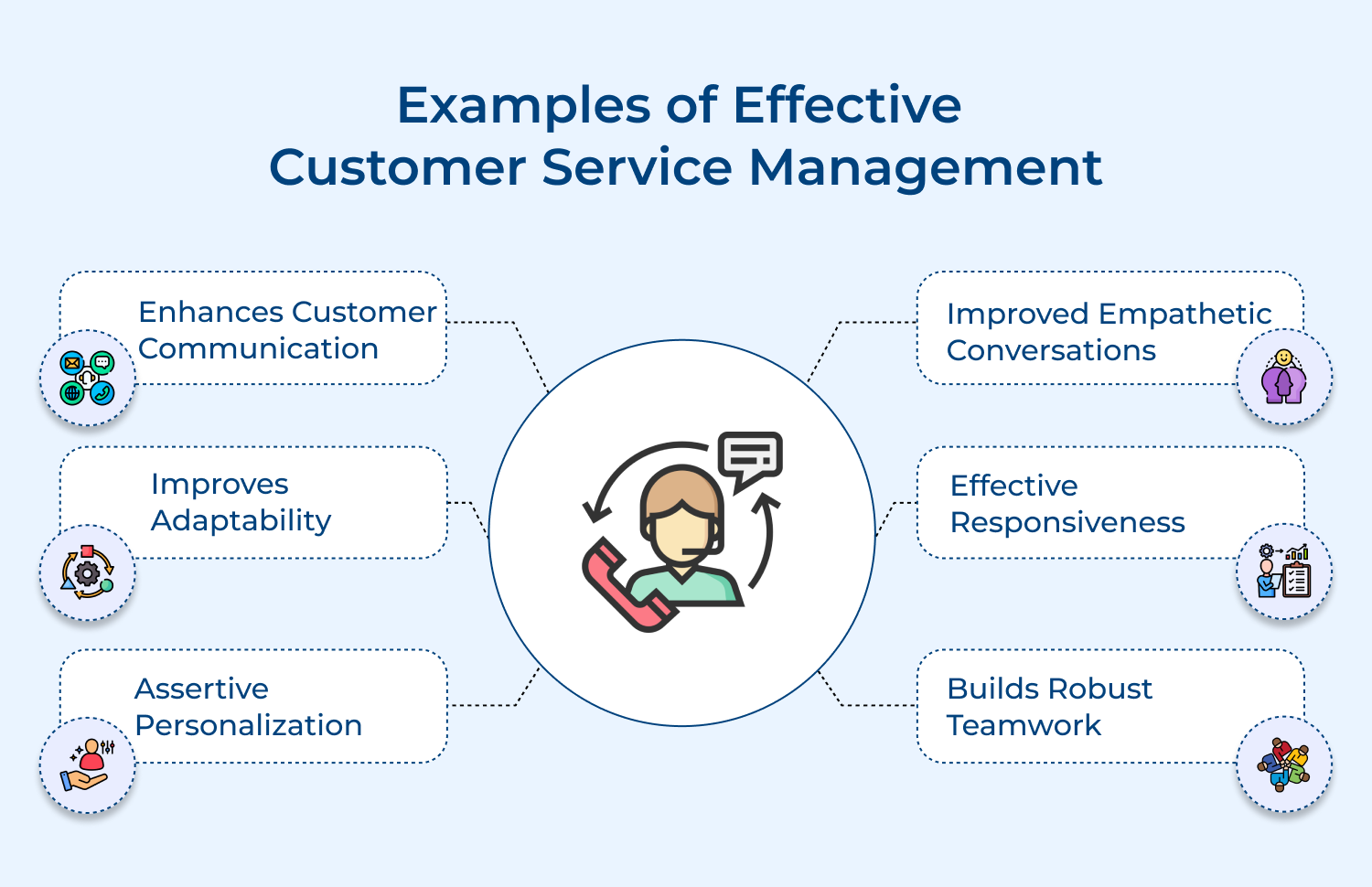1. Define Clear Goals and Objectives
Well defined objectives will help your team understand their roles, responsibilities and expectations. Clear goals also empower in measuring the success of the customer service process and identifying areas for improvement.
Here are some best practices to consider when defining clear goals and objectives:
- Align goals with company vision: Ensure synergy by aligning customer service goals with the broader vision and mission of the company. The alignment helps create a unified approach that enhances customer experience across all touchpoints.
- SMART goals: Adopt the SMART (Specific, Measurable, Achievable, Relevant, Time-bound) framework when setting customer service goals. Specificity helps in creating a clear focus, setting achievable targets, maintaining motivation and accountability.
- Prioritize customer satisfaction metrics: These metrics may include Net Promoter Score (NPS), Customer Effort Score (CES), or Customer Satisfaction Score (CSAT). Measuring as well as tracking these metrics allows you to gauge the effectiveness of your customer service efforts and make data-driven improvements.
2. Develop a Customer-Focused Culture
Leadership should build a customer-focused culture throughout the organization. It means that everyone in the organization should understand the importance of customer service and how it impacts the business. The customer-focused culture should be ingrained in the organization’s values and employees should be trained or rewarded for delivering excellent customer service.
Below are some best practices to help develop a customer-focused culture:
- Leading by example: Senior leaders and management should be role models of excellent customer service. Their behaviors, attitudes and actions should reflect a deep commitment to customer satisfaction. When employees see their leaders prioritizing customers, they are more likely to embrace a similar mindset.
- Continuous training and development: Invest in continuous training and development programs that enhance customer service skills for employees at all levels. Ongoing training ensures that employees stay equipped with the necessary tools to deliver exceptional customer service.
3. Provide Ongoing Training to Customer Service Teams
Ongoing training is essential for customer service teams to stay up-to-date with the latest trends, technologies, and techniques in customer service management. Regular training sessions help improve skills, increase knowledge and build confidence among customer service representatives. Continued training also helps employees understand how their performance impacts the overall business goals.
Below are some best practices to help in training service teams:
- Assess training needs: The first step in providing effective ongoing training is to assess the training needs of your customer service teams. Conduct regular evaluations to identify knowledge gaps, areas for improvement and emerging trends. The assessment will help tailor training programs to address specific needs and challenges.
- Utilize real-life scenarios: Incorporate real-life scenarios into your training sessions. Role-playing exercises, case studies and interactive simulations can help customer service teams understand as well as apply their knowledge in practical situations. Encourage active participation and provide constructive feedback to enhance their problem-solving skills.
4. Implement Effective Communication Channels
Effective communication channels are essential to building strong relationships with customers. Implementing channels such as phone, email, chat and social media can help improve response times as well as overall customer satisfaction. Businesses should also closely monitor these channels and respond promptly to all customer concerns.
Below are some best practices to help implement effective communication:
- Utilize multiple channels: Customers expect various communication channels to be available. It is important to offer options such as phone, email, live chat and social media platforms to address customer inquiries. By providing multiple channels, you cater to the preferences of different customer demographics.
- Provide timely responses: Customers appreciate prompt responses, so it’s crucial to prioritize timely communication. Set expectations for response times and make sure your team adheres to these targets. If a customer reaches out with a question, acknowledge their message and provide regular updates until the matter is resolved.
5. Establish Metrics and KPIs
Measuring the effectiveness of the customer service management process is crucial. It helps businesses identify areas for improvement, optimize processes and track performance. Establishing metrics and key performance indicators (KPIs) such as response time as well as first contact resolution rate are crucial in measuring the effectiveness of the customer service process.
Below are some best practices to measure performance of support management:
Resolution time: Monitor how long it takes to resolve customer issues. The metric measures the effectiveness and speed of your customer service efforts. Strive to minimize resolution times without compromising the quality of the solutions provided.
Customer retention rate: Measures how successful your customer service efforts are in retaining customers. Calculate the percentage of customers who continue to do business with your company over a specific timeframe. A high retention rate indicates effective customer service management
6. Regularly Review Performance and Refine Processes
Customer service management processes are not static. They need to be reviewed as well as refined regularly to keep up with changing customer needs and industry trends. Regularly reviewing performance, soliciting feedback from customers and using data to make informed decisions can help businesses stay ahead while also providing excellent customer service.
Below are some best practices to help review and refine service processes:
- Set clear performance goals: Start by defining clear performance goals for your customer service team. These goals should be aligned with your organization’s overall objectives and customer expectations. Setting clear goals enables you to measure progress and identify areas that require improvement.
- Implement quality assurance programs: Establish quality assurance programs to ensure consistency in service delivery. It can involve monitoring customer interactions, tracking response times and performing regular quality checks on support tickets or calls.
Use Cases of Customer Service Management (CSM)
Customer service management is crucial for any business that wants to enhance its customer experience.

